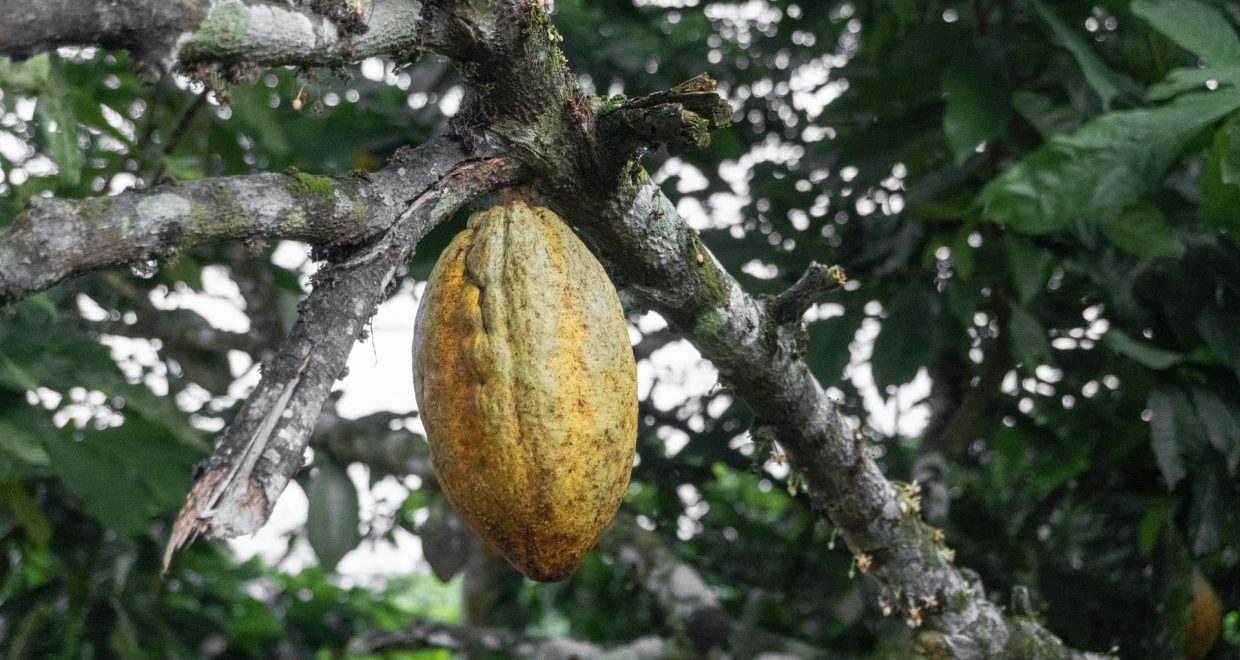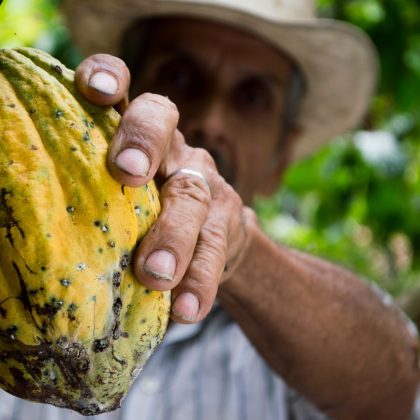Fair Trade of Commodities: What’s in a Label
Recently, Nestle decided to end the relationship between its Kit Kat brand of chocolates and Fairtrade, a UK based labelling organisation. Instead, it plans to go for the certification accorded by Rainforest Alliance. This move has come under fire from various quarters. It has been alleged that this will put at risk the lives and fair income for over 16,000 small cocoa farmers in Ivory Coast. Both Fairtrade and Rainforest Alliance are certification labels, which help the consumers identify if certain standards have been met during the production and supply of a given product. For example, if a chocolate has a Fairtrade label, it is an assurance to the consumer that the farmers have been paid fairly. These labels are provided to a company after assessments by third parties.
However, the objectives of these labels differ significantly with the result that the change from one label to another can hurt countless farmers and others in the supply chain. Thus, we must ask what goes on behind commodity certification. What are the standards that these labels ascertain? Which of these labels is the fairest of all? What interests do these labelling organizations pursue?
Kit-Kat’s Move Away from Fairtrade
Until the switch, the cocoa used for Kit-Kat in the UK and Ireland was sourced from 16,000 Fairtrade registered farmers in Ivory Coast who will now have to move to Rainforest Alliance in order to continue supplying Nestle. According to Nestle, the primary reason behind this shift is to align Kit Kat’s supply chain with those of its other brands, which are already working with Rainforest Alliance. In fact, last year, Kit Kat also stopped procuring Fairtrade sugar from farmers in Malawi and Fiji. As per a report, combined together, this shift is going to cause a cumulative annual loss of about $2.5 million for over 27,000 farmers. The decision also comes at a time when the Covid-19 pandemic has depressed commodity prices, disrupted trade chains and punctured social security floors. While Nestle has promised to help the farmers with the transition, we must consider what that means. But before we do so it is pertinent to understand how Rainforest Alliance and Fairtrade differ.
Fairtrade v. Rainforest Alliance: A Question of Distribution of Power
Both Rainforest Alliance and Fairtrade seek to ensure a certain standard of ethics in trading of commodities, enabling the consumer to make sustainable choices. While Rainforest Alliance certifies farms as ‘sustainable’ if they follow a set of guidelines concerning social, environmental and occupational standards, Fairtrade has a much simpler goal: Ensuring that farmers are given a minimum price and a premium which is invested back into the community.
The differences are glaring. While Rainforest Alliance imposes its conditions on the producers (farmers), Fairtrade imposes obligations on the buyers (corporates). This is much less of a problem when the producers themselves are big corporates. For example, Chiquita is a major US-based multinational corporation specializing in banana cultivation. It has certified most of its farms in Central America with the Rainforest Alliance label. However, when the producers are smallholders in Ivory Coast, they have no one to turn to but to the buyer (Nestle in this case) to help them transition to and maintain the standards set by Rainforest Alliance, further reducing their independence and bargaining power. As per a study by International Social and Environmental Accreditation and Labeling (ISEAL) Alliance, “Pressure from buyers on the cooperative cascaded to producers, with some farmers feeling that they had no choice but to become certified.” This study found that farmers have no choice but to go with Rainforest Alliance because that is what the buyer demanded – even if it meant lower returns. Intuitively, an ideal certification standard should impose requirements and costs on the party which has a higher bargaining power. In today’s commodity trading channels, small farmers in countries like Ivory Coast have virtually no control over prices of their goods. Thus, Rainforest Alliance’s mechanism of imposing conditions on the producers (even if they are small farmers) is counterproductive.
The other point which this study made clear is that the “main focus was to do with growing better bananas or improving economic returns”. A study which surveyed the impact and implementation of Rainforest Alliance guidelines in the cocoa farms of Ivory Coast found that “addressing the productivity issue received more attention than environmental issues”. The reason behind this was the complexity and vagueness of the guidelines. Currently, there are over 37 requirements, each of which has many loopholes. For example, on soil conservation, the 2020 guidelines provide, “4.4.4. Producers use organic fertilizers and by-products available at farm level first, and supplement by inorganic fertilizer if nutrients are still lacking”. This vague standard provides for soil conservation only on a very nominal level and allows usage of inorganic fertilizers without imposing any concrete requirements. Furthermore, the fulfillment of this standard is inspected only once every three years. Such vagueness allows undue flexibility in fulfilling the requirements, leading to little impact on the environment. Thus, evidence suggests that while Rainforest Alliance and its ideals help brands with public perception, they may not have much of an impact on the environment and may hurt farmer incomes and bargaining power. This makes us ask: what about Fairtrade?
Fairtrade’s idea of a minimum price and a premium is a more central goal and the responsibility is on the buyer (like Nestle) to achieve it. This ensures that the one with the bargaining power also bears the costs of certification. Further, Fairtrade requires that the premium is invested in the community on public goods like education, healthcare, sanitation etc. This idea of community development is based on explicit evidence that environment conservation follows decent livelihoods. The ISEAL study also found that the biggest concern for the farmers is conservation of their environment. Thus, while to corporates environmental conservation may represent enhanced consumer appeal, for farmers it is their life.
However, Fairtrade is not above reproach. One study found that even after decades of operation and peak popularity, Fairtrade was unable to deliver significant benefits to its farmers. This was because most Fairtrade farmers could sell only a small part of their produce under Fairtrade contracts due to the lack of sufficient orders. The study concluded that this was a result of Fairtrade’s urge to focus on widening its impact (that is bringing more area and number of farmers under its certification) than on deepening it. That is to ensure that farmers onboard can sell all of their produce through Fairtrade and could sustainably rely on it.
Other studies have also found that when it comes to structural issues like forced labour, Fairtrade has failed to have any impact. Evidence on this has come from the tea plantations of Assam, where despite Fairtrade labelling root problems like forced labour are rampant and no better than in non-certified farms. The implication then is that while the plantation owners are benefitting from the extra premiums, the actual farmers who work as daily wage laborer stand to gain nothing. This raises suspicion on the actual empowering effect of Fairtrade.
The Way Ahead for Sustainable Certification
Both the certification bodies, as well as many others which are not the subject of this article have successfully established themselves as symbols of sustainability. The idea behind labeling is to enhance the bargaining power of farmers who are otherwise in a very weak position to secure key interests like environmental protection, minimum compensation, and fair treatment. By linking these human rights to consumer appeal, labels are meant to help consumers make informed choices and penalize corporates which do not care for the small suppliers. However, the certification regime overall has failed to achieve this goal. While Rainforest has failed to achieve its goal of sustainability by having vague and flexible standards, Fairtrade has lost direction by focusing too much on displaying numbers. Nestle’s move away from Fairtrade then, though condemnable given its immediate impact on farmer livelihoods, is only a symptom of the chronic problem: lack of bargaining power and choices for small farmers. It is high time certification institutions worked on this primary issue and delivered on what they promise: sustainable livelihoods and sustainable environment.
Binit Agrawal is a student at the National Law School of India University, Bengaluru. He has a deep interest in business and human rights and is also a research assistant to Prof. Surya Deva, Vice Chair, UN Working Group on Business and Human Rights.







Great article, very well written. Would appreciate the author’s take of the issue in his home country as well?